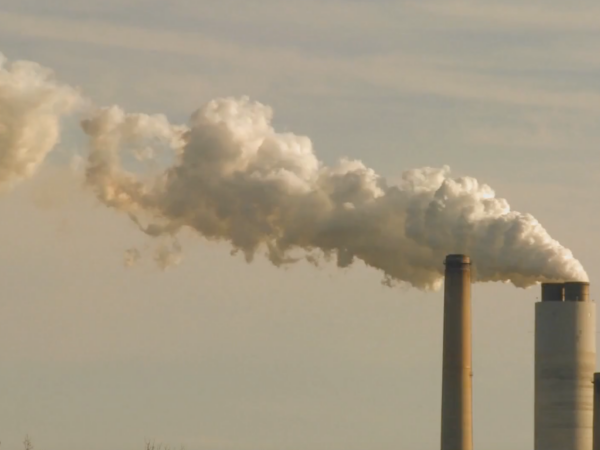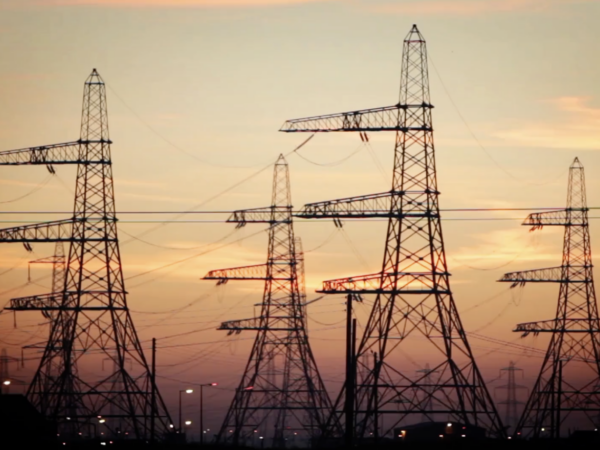
In June 2017, when President Donald Trump announced that the U.S. would withdraw from the Paris Climate Accords, three states had an immediate reaction and plan.
New York, California and Washington announced formation of the United States Climate Alliance calling it a “coalition that will convene U.S. states committed to upholding the Paris Climate Agreement and taking aggressive action on climate change.”
With that action, New York led Great Lakes states in the effort to reduce greenhouse gas emissions, establish clean energy plans and fund initiatives to meet carbon reduction goals.
Since then, all the Great Lakes states except Ohio and Indiana have joined the climate alliance.
In January 2018, New York Gov. Andrew Cuomo presented his climate plans in the annual State of the State address and updated the goals during the state’s annual Climate Week in September 2020.
New York’s climate agenda is “the most aggressive clean energy initiative in the nation” and the state is on a path to zero emissions from electricity by 2040 and 70% renewable energy by 2030. Greenhouse gas emissions will be reduced by 85% from 1990 levels by 2050, according to the Climate Week statement.
Other Great Lakes states also have announced their own plans to mitigate climate change impacts.
Tracking progress
As climate change plans will unfold over decades, it’s important and fair for people to know if and how the plan is progressing, according to policy advocate Tyler Barron.

ELPC Policy Advocate Tyler Barron (Photo courtesy of Environmental Law and Policy Center)
Barron tracks climate change and energy in the Great Lakes region for the Environmental Law and Policy Center.
It’s important, Barron said, for the plans to have interim goals and to report on progress against those goals in terms the public can understand.
“Effective plans clearly define priority and feasibility. The best plans delineate their mission with short, medium, and long term goals. Those goals will have corresponding actions that allow the community to remain engaged with the process and better understand the journey necessary to accomplish important, large-scale climate policy,” Barron said in an email.
The reality is that the best state climate initiatives at this point are aspirational and pragmatic. They are ambitious but understand the existing limitations, according to Barron. He pointed to U.S. House Rep. Sean Casten as an example.

Illinois U.S. Rep. Sean Casten (Photo courtesy of Rep. Casten’s office)
The representative from Illinois has a unique perspective on what will make a long-term climate initiative successful.
Casten, a Democrat, is a former clean energy company CEO and, as a member of Congress, has sponsored legislation that would require the U.S. to honor its commitments to the Paris Climate Accords.
“To be successful, climate change initiatives need to have monetary will, political will and be prepared to deal with things that are currently not known,” Casten said in a statement.
Great Lakes states other than New York began announcing climate plans in 2019, with Michigan releasing its version last month. Great Lakes Now canvassed the region to see how each state is dealing with climate change.
Illinois
A week after taking office in January 2019, Gov. J.B. Pritzker signed an executive order entering Illinois into the U.S. Climate Alliance and followed in 2020 by committing Illinois to 100% clean energy by 2050.
The Illinois plan is based on eight principles that include increased accountability from utilities, phasing out “dirty power” and implementing market-based solutions that lead to clean power and air.
Indiana
Indiana does not have a specific 20- to 30-year goal to reduce carbon emissions.
But it has dedicated $41 million to programs that reduce nitrogen oxide emissions by replacing diesel engines with electric, propane and clean-diesel engines, according to Department of Environmental Management spokesperson Barry Sneed.
Indiana has also focused on ensuring all areas of the state meet the National Ambient Air Quality Standards, Sneed said, with success in Indianapolis.
Michigan
In September this year, Michigan announced its climate plan with Gov. Gretchen Whitmer in an executive directive setting a goal of “economic decarbonization” by 2050 with an interim goal of a “28 percent reduction below 1990 levels in greenhouse gas emissions by 2025.”
Michigan is in a unique and contradictory situation with its climate initiative.
While aspiring to be carbon neutral by 2050, it has an agreement with Enbridge Energy to replace the existing aged Line 5 oil pipeline with a pipeline in a tunnel.
Michigan could be in the position of trying to move toward carbon neutrality while building an oil pipeline that would operate for decades.
In 2018, Whitmer campaigned on decommissioning the existing Line 5 and early in her term tried to negotiate with Enbridge on Line 5 and the pipeline in a tunnel replacement. But negotiations broke down over deadlines for completion of the tunnel and decommissioning the current Line 5.
Since then, Whitmer has been vocal in criticizing Enbridge but has not revoked Enbridge’s authority to operate Line 5.
Separate, Attorney General Dana Nessel has filed suit to force Enbridge to shut down the current pipeline. A decision is pending.
A separate suit brought by Nessel to declare the pipeline in a tunnel agreement invalid was denied by two courts and Michigan is not appealing the decision. The new tunnel pipeline is currently going through the permit process.
In a recent media briefing on the climate plan, Department of Environment, Great Lakes, and Energy director Liesl Clark declined to comment on Line 5 and its replacement citing pending litigation. She referred reporters to the department’s Line 5 website for more information.
EGLE referred Great Lakes Now’s questions on Michigan’s climate plan to the governor’s office who did not respond.
Minnesota
In March 2019, Gov. Tim Walz launched the One Minnesota Path to Clean Energy initiative. It contains policy proposals designed to take Minnesota to 100% clean energy in the state’s electricity sector by 2050.
Acknowledging that Minnesota’s primary source of greenhouse gas emissions comes from transportation, the state launched Clean Cars Minnesota with the goal of selling more cars that emit less pollution with an emphasis on ultra-low and zero-emission vehicles.
Another component of the Minnesota plan will encourage increased use of biofuels. Minnesota is the fourth largest ethanol-producing state.
Ohio
Ohio did not respond with a 20- to 30-year forward-looking plan.
Ohio requires 8.5% of its electricity to come from renewable sources by 2026, according to information provided by its Public Utilities Commission. The commission also provided information illustrating a steady decline in carbon dioxide emissions since 2007.
Pennsylvania
In January 2019, Gov. Tom Wolf issued an executive order creating Pennsylvania’s first statewide climate goals that aim to reduce greenhouse gas emissions by 26% by 2025 and 80% by 2050, compared with 2005 levels, according to the governor’s website.
The plan emphasized increasing renewable energy, incentivizing energy efficient buildings and increased use of electric vehicles.
In June 2020, Wolf reaffirmed the plan and a continuation of its work even through COVID-19.
“Even as we continue work to mitigate the spread of COVID-19, we cannot neglect our responsibility and our efforts to combat climate change,” Wolf said in a statement on his website.
Wisconsin
In 2019, Gov. Tony Evers issued an executive order creating the Office of Sustainability and Clean Energy with the goal of ensuring all electricity consumed within the State of Wisconsin is 100% carbon free by 2050.
The office would also work to ensure that Wisconsin is meeting the Paris Climate Accords carbon reduction goals.
Catch more climate change news on Great Lakes Now:
Want the Youth Vote? Prioritize Climate Change
Survey analysis finds race plays role in perception, vulnerabilities to climate change in Indiana
Intersecting Crises: Fighting for climate justice in a pandemic
One key solution to the world’s climate woes? Canada’s natural landscapes
Midland Flooding: Climate change and rains exacerbate dam infrastructure issues
API key not valid. Please pass a valid API key.Featured image: Lake Erie (Great Lakes Now Episode 1013)




